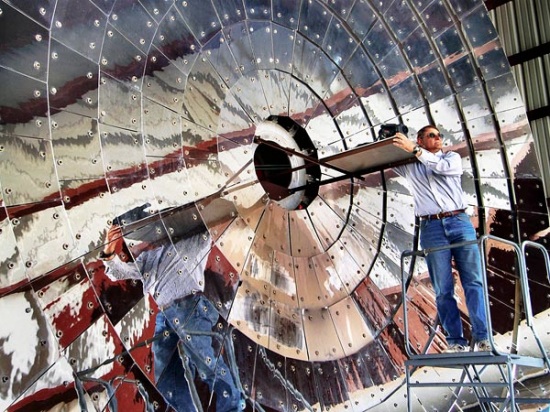
At Sandia National Laboratories, a giant array of mirrors heats rings of metal oxides to 2,550 degrees F, allowing a beer-keg-size reactor to produce carbon monoxide or hydrogen gas out of CO2 or water. The result is known as syngas, and it can be further processed into the kind of hydrocarbon-based fuels (think gasoline and diesel) upon which our transportation infrastructure depends.
The process represents some serious blue-sky thinking. In its current incarnation, it would take almost 500 square miles of mirrors to produce enough syngas to create 1 million barrels of oil a day. (The U.S. currently uses around 20 million barrels per day.)
Taking carbon from more-concentrated sources than our atmosphere is a little bit easier. Researchers in the UK are working on "Carbon Capture and Utilization," in which CO2 is captured from smokestacks and used to create industrial products.





